Last Chance to Catch NYC's Holiday Notalgia Train
We met the voices of the NYC subway on our nostalgia ride this weekend!


Joy Masoff is the author of Oh, Yuck!: The Encyclopedia of Everything Nasty which was made into a Netflix series and Oh, Yikes!: History’s Grossest, Wackiest Moments. She is currently working on a PhD in history and wrote this ode to the elevated train in New York City, where she was born and raised. She currently lives in Litchfield, Connecticut.
Perhaps I rode the El in a previous life. Perhaps our souls never leave the place of our births, and reincarnation is not based on the purity of spirit or the sum of good deeds. Perhaps it boils down to original geography. Perhaps I took the Broadway Ferry Line in 1893, the year it was built— an ink-black steam engine belching foul smoke. A study was made to use horse-drawn carriages high above the street, but as onerous as flying sparks from iron wheel on metal track were, projectile horse manure was deemed worse. Perhaps I rode the El from Williamsburg, its point of origin, to Cypress Hills—a neighborhood named for a cemetery. It was the end of the line in the late 1800s, both figuratively and, for some, literally. Jackie Robinson is buried in the Cypress Hills cemetery. Buoyantly breasted Mae West—America’s first sex symbol—sleeps here, too, along with Piet Mondrian, an abstract artist, whose primary-colored paintings shocked the art world. Perhaps Mae resurrected her famous line, “Is that a pistol in your pocket, or are you just happy to see me”? Perhaps they slept together.
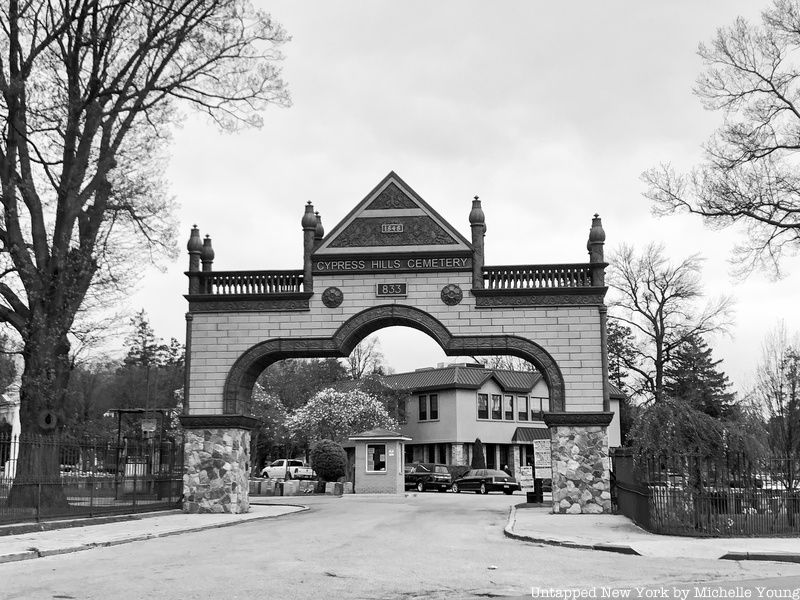
Harry Houdini slumbers nearby, just a few blocks walk across the invisible line that divides Brooklyn’s cemetery cities from Queens. Perhaps Houdini escaped from his actual coffin, breaking the chains of death to escape dark dirt and leap into the afterlife. Did I know him? Perhaps one of my tombstones from a former life lay close by in one of Brooklyn’s cemetery cities.
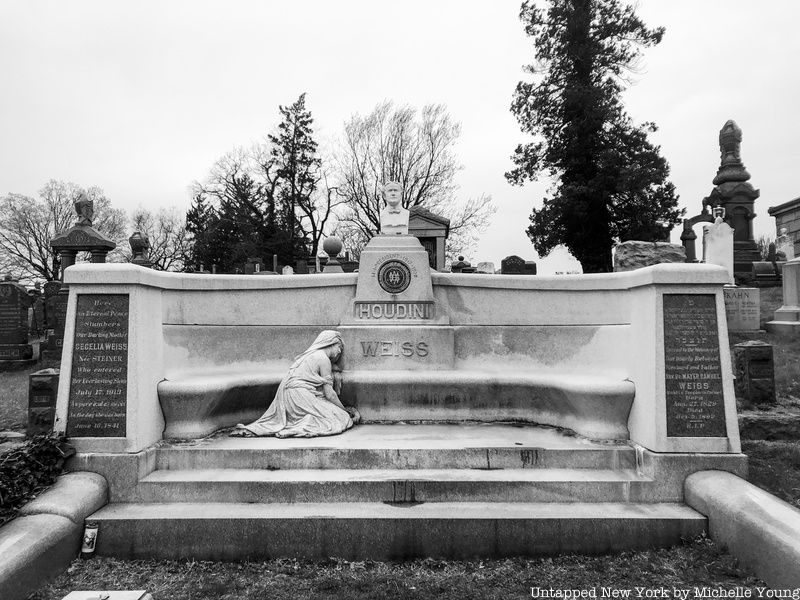
Nine of those burial sites are my dead. My parents lay wedged between their parents. There lies my father’s mother—she of the arthritis-prone joints I inherited. Here lies my maternal grandfather: a gaunt El Greco painting of a man. I wonder if Uncle Murray—a diminutive life-long hoarder —has filled his grave with broken umbrellas and unmatched gloves? Perhaps. Eight graves. Four couples. And one solo grave, minus a life companion to accompany her in death. My sister.
Perhaps I rode the El just after World War I ended? The trains were now electrified with yellow rattan seats that frayed and stabbed innocent thighs. Perhaps the rattan pricked through the thin fabric of a shapeless flapper dress. Or maybe I was a man in that life—red-eyed and rheumy—stopping for a quick whiskey every morning at the Dew Drop Inn, just past the El entrance, hoping to erase memories of trenches in French forests before mounting the steep steps, heading to the city. Did I live in the shadow of the tracks even then? Thirty-six newly built attached brick two-story homes were built in the girders’ shade. Perhaps one of them was mine.
Or, perhaps we only have one life. It is 1952, and I sit lassoed into my baby pram, a knitted cap with bunny ears atop my head. Alone, parked on my brown brick stoop, facing the El, I patiently wait for the next train, waiting to watch the sparks shower down onto the street. Perhaps it is a comfort to my baby eyes because I know this place—know it deeply and well. I do not need a fading photo to remind me of the hours I spent staring at the girders and track—dreaming of running, climbing, riding, moving, going somewhere, anywhere, everywhere. The El is encoded in the twisting strands of my DNA, and almost seven decades later, I still dream of it.
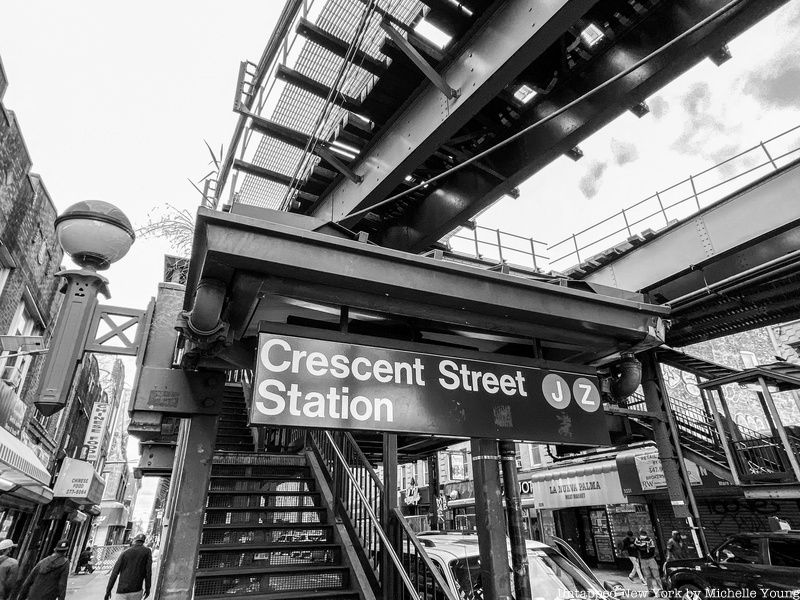
Brooklyn summer heat rivals a bayou swamp in the years before air-conditioning. On these nights when it is too fetid to sleep, I levitate off my bed. Even the touch of a light sheet is unbearable. As I hover, every 20 minutes, I hear the screech-rumble-screech of a passing train. Elevated three-stories up, the J line makes a 90-degree turn on Jamaica Avenue, grumbles for ten blocks along Crescent Street, then makes a second 90-degree turn, sparks flying, metal grinding, before pulling into the Crescent Street station. My house sits six houses in from the gray girders and the soot and sparks falling from steel wheels. It is always dusk in the shadows of girder, beam, and track.
My God, the El—my mother dragging me by the arm, my chubby preschool legs struggling up three flights of steep steps that lead to a tiny waiting room with a chipped sign between two doors that open to a single platform: FROM CITY TO CITY. Even as a child, I knew I did not want to live in a “from,” so, at a very young age, I plotted my escape— a wild-haired child evoking Edmond Dantes in the Count of Monte Cristo. Breathless from the climb to the platform, my mother would nudge me under the turnstile and onto the splintered wood platform with gaps so wide I could watch the cars below. Perhaps this explains my lifelong vertiginous fear of heights.
Saturdays meant a trip TO CITY with my mother. I was taught to place spare change in the blind beggars’ cups as they tapped through the cars with their guide dogs. Taught to fear the dreaded third rail that lay alongside the tracks: told I would be instantly incinerated into an ash heap if I dared to touch it. I never understood why rats could scamper across the rail unharmed, but then again my mother also told me that if I swallowed chewing gum, my lungs would stick together. Perhaps they have.
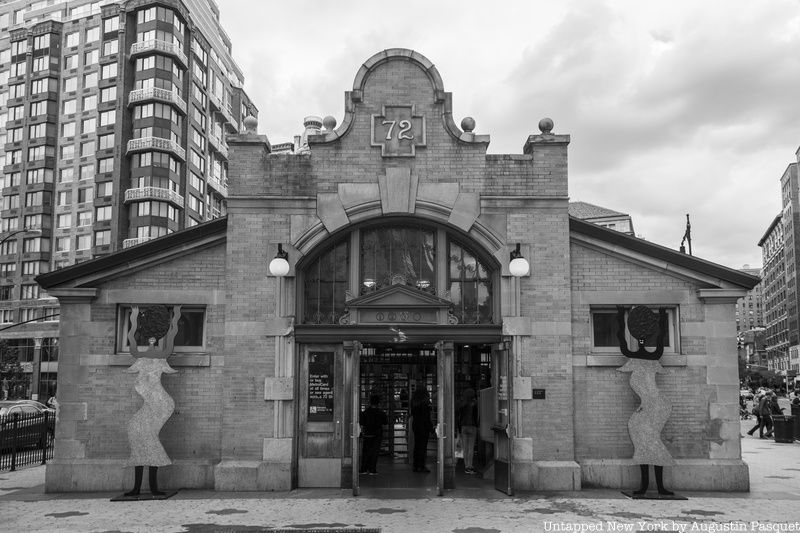
Saturday train rides meant art classes, music lessons, and museum visits, but when I was 10, I began riding the train TO CITY by myself to study piano with a formidable Russian émigré with an enormous gray bun. No Miss or Mrs. or Ms. was she. She was a Madame, pronounced a la Françoise, and she frightened me. I never practiced enough to satisfy her, but every Thursday after school, I would run up the El’s steep steps—my very own Everest—praying that I had enough tokens to get into the city and back. A new train-terror emerged: a Sophie’s Choice, minus the Nazis and death. To get to Madame’s apartment on West 72nd Street, it was necessary to change trains. Which sticky-floored, urine-scented passageway to choose? Take the El to the A train with its vertigo-inducing escalator from sky-high to subway bowels? Or stay on the El to Delancey Street, the most fetid transit point in the entire subway system? Ten years old and already living on the edge.
By the time I was 13, I rode the train almost every day, riding to the high school that inspired the movie Fame. My days began with a screech, rumble, run—run faster—watching the train’s undercarriage as it began to round the curve. Two steps at a time, no breath left in my lungs. Where’s my token? Icy winters, frigid air blowing up through the platform cracks. Oppressive city-summer heat. The ride from Cypress Hills in Brooklyn to 135th Street and Convent Avenue in Harlem took 1 hour and 45 minutes each way, twice a day, barring a breakdown.
A thousand people along my route, pushing on and shoving to get off. Normal people. Crazy people. Dirty old men with filthy fingers pressed up against me on crowded trains. Hari Krishnas. Hasidic men in shiny black coats. And always, the beggars, and one in particular, who I often saw—a man with a neatly printed cardboard sign hanging from his neck, who simply stopped at the waist. He rode the D train with me, his torso resting on a square of plywood, propelled by two puny roller skate wheels. A half-century later, I can still see his pleasant face and muscular mass, even though my adolescent self avoided staring. If I could see him now, I would stuff his tin cup with as many hundred-dollar bills that would fit.
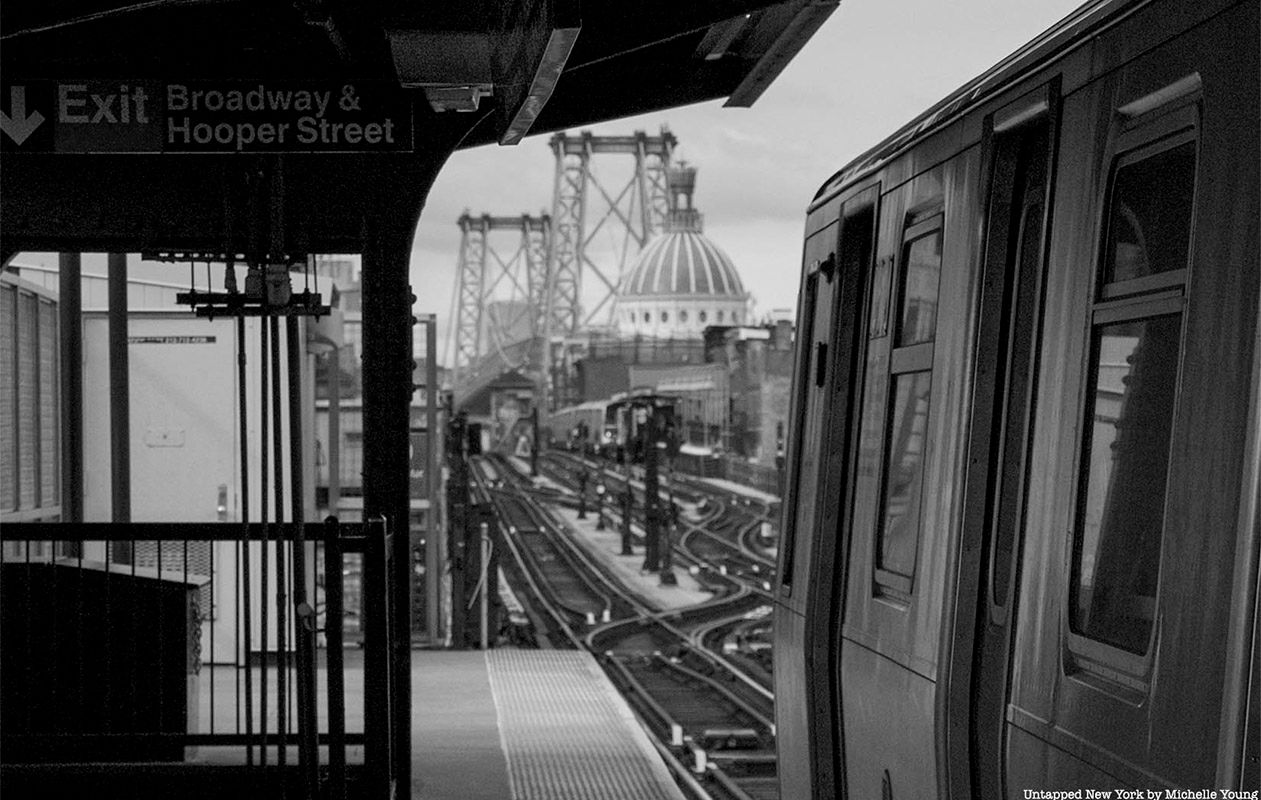
About those piano lessons. I am very sure that I never expressed any interest whatsoever in music, but one day a spinet piano appeared in our living room. I have no recollections of pleading for lessons or even finding my first middle C. My first melodic memories are of my 8-year-old self sitting at the keyboard of Madame Robinor’s 4th-floor walk-up apartment in TO CITY after an agonizing hour and 10 minutes on the J train with my mother after school. I am grateful she realized an 8-year-old was not up to managing the New York Transit system. My mother would sit in a chair in the corner of Madame’s apartment as I plodded through Bach’s Two-Part Inventions or a Mozart Sonata, or whatever weekly patch of quicksand I was ordered to cross. Had I hit a wrong note? She was scowling! Perhaps her moue of unhappiness was because she wished that she was the one taking lessons? I would have gladly changed places.
I was an adequate pianist in a house where adequate was not acceptable—a home where introversion, with its comforts of invisibility, was discouraged. Dora’s daughters were expected to be front and center, shining in the spotlight. In 5th grade, I became the pianist for the P.S. 171 school assemblies —playing the Star-Spangled Banner to kick things off, followed by seasonal tunes about pilgrims, snowmen, or bonneted bunnies, but always with a frisson of terror running through my limbs. Perhaps I was born with stage fright? In 7th grade, I was invited to a showcase at the Brooklyn Academy of Music. I played Grieg’s March of the Trolls, Op. 54 No. 3. Heart-hammering, sweating palms pressed against a plum-satin dress, I remember starting to play. I remember curtsying. But the entire middle portion of my performance is lost to me. For all I know, I leaped off my bench and performed barnyard animal impressions. The blankness of my experience on the stage was, and still is, frightening. Everyone said I was wonderful, but I have no memory of it. Plus, people lie. Especially relatives. Never trust them.
For me, the pressure to perform was paralyzing. Pleasing everyone was exhausting. Music brought me no joy. My mother’s dreams for me overwhelmed my own, but I slogged on— no match for her diminutive Stalin-esque steel. When I was 13, I told her I did not want to take lessons anymore. She reddened, growing so enraged that I feared she would hit me, but eventually, she relented. It is only now, with my own children grown, that I am even willing to think about mothering and to appreciate how brutally difficult it is and how hard she tried. It also forces me to wonder what mistakes I made. In 2017, I began a Master’s degree program in history. Grade-anxiety—another gift from my mother—swiftly bubbled to the surface. This arose from years of coming home with a 96 and being asked, “What happened to the other 4 points?” …born from the dread that came from spelling Christmas wrong on a 4th-grade quiz and trying to sneak a missing h in after the C to convince the teacher that “I-DID-TOO spell it correctly.” Anything to avoid a 90 instead of 100. I mentioned this to my daughter, who smiled. “So that’s where you got it from. You do know you did the same thing to us.” Had I? Was this March of the Trolls mothering—the erasure of a chunk of memory, only this time it involved marching my children toward perfection, instead of Grieg?
Oh, Mommy! If you were alive, I would ask about your own thwarted dreams. I’d treat you to music and art lessons, with a side order of med school thrown into the mix. You had no paintbrushes or keyboard—only a train to show your daughters the possibilities that existed in TO CITY. You tried to make masterpieces. But perfection is an impossibility, and masterworks are illusory, and I am deeply flawed despite your efforts. Now a mother myself, I understand that love drove you, and I thank you for it, and I will try not to disappoint you in whatever spiritual state you are in now. You expected great things from us, and so, I keep going, moving, practicing life, while you drink your after-dinner glass of celestial evening tea, keeping a watchful eye.
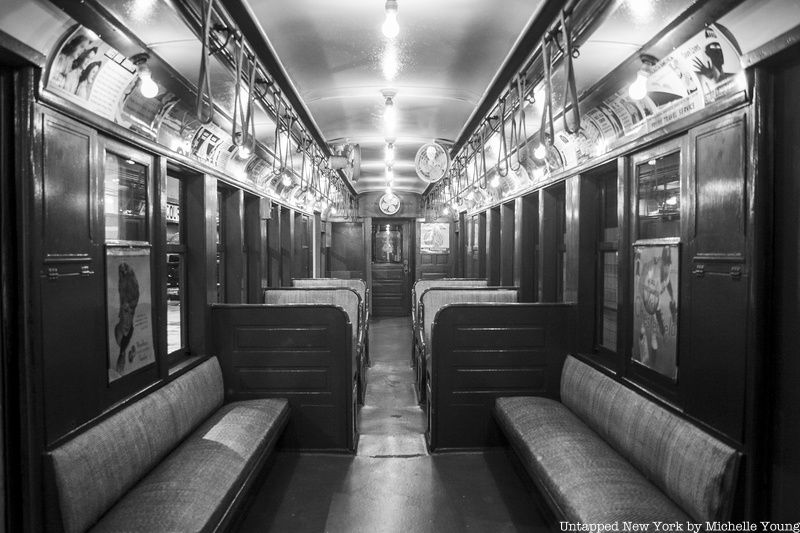
November. Dark at 4:30. No redeeming sugary snow-cover to brighten the steel-grey gloom of the El girders. I am a graphic design major in my last year of college—three train connections to get there, including the Myrtle Avenue shuttle, which still had its original cars from World War I. Perhaps I recognize the fraying rattan seats from a former life.
I am saving to escape FROM CITY TO CITY, dreaming of simply walking home. I put in as many hours as possible at Bloomingdale’s on the Flying Squad—a job that is not as glamorous as it sounds. No jaunts around the world on supersonic jets whisking voyagers to Paris in three hours. No. My flight is from men’s shirts to bath towels to lingerie. Every workday, I fly to yet another department. Women’s shoes is hardship pay, but it comes with a 2 percent commission, so I spend three months on the tarmac there, adding nicely to my escape balance. “Show me something in a navy pump” rings in my ears as I fall asleep.
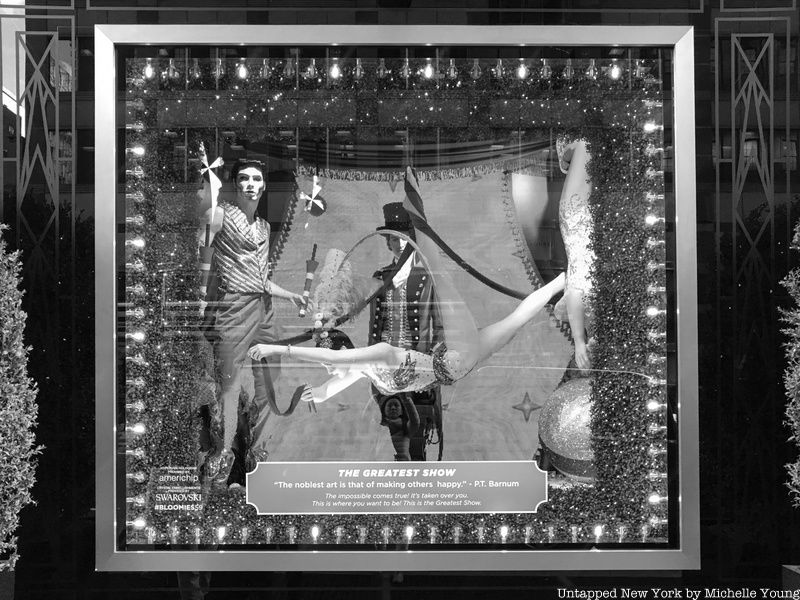
Before Thanksgiving, Bloomie’s announces it will stay open until 10 P.M. on Mondays and Thursdays until Christmas. I do the math: one hour and 15 minutes from the closing bell to the Crescent Street station. An ETA of 11:30 P.M. My usually crowded trains are desolate at this hour, and my old friends—the East New York and Delancey Street stations—are not exchange points from 59th Street on Manhattan’s East Side. My new nemesis is Chambers Street.
There is a particular cavernous draft that hangs over that station, even in the summer. Approaching trains sends a zephyr of gritty wind through the tunnels. In November, it is sepulchral. Nighttime subways have a special gloom, so I am always relieved when we burst out of the tunnel and ascend the Williamsburg Bridge. Three-story buildings flank the train, and I can gaze into a high-speed kinescope of moving lives—alcoholics slumped before gray TV light, screaming spouses, and exhausted new mothers. Elemental humanity in microsecond bursts.
College culmination projects blur with walls and walls of shoeboxes, and fetid feet proffered like canapés at a cocktail party, but I dutifully hunker down on my low bench and smile. Now, slumped on a night train, I do not need to be pleasant. Finally, we slide into Crescent Street, and I emerge into the bitter night air. I run down the stairs, and there he is. My father. He is standing in the cold at the foot of the steps waiting for me, and I am touched. He smells like Tarrytown cigarettes and oil burners.
In winter, I rarely see him. He rises at dawn and returns long past dinner. Under his coat, he wears a dark blue shirt, stained with Shell Oil. It says “Ed,” embroidered in red thread script. Overhead, the train screeches around its bend and rolls on towards Queens. and it is suddenly still— just the two just of us on a deserted street, the night pin-drop quiet, save for our footsteps. “I didn’t want you walking home by yourself,” he says as we link arms. And even today, so many years later, my father gone for more than 30 years, I simultaneously weep and smile, thinking of that moment. Last year, lost hiking through the woods, I suddenly smelled Tarrytown’s and oil burner grease. I looked around, searching for him. Was he waiting for me to make sure I was safe? Perhaps.
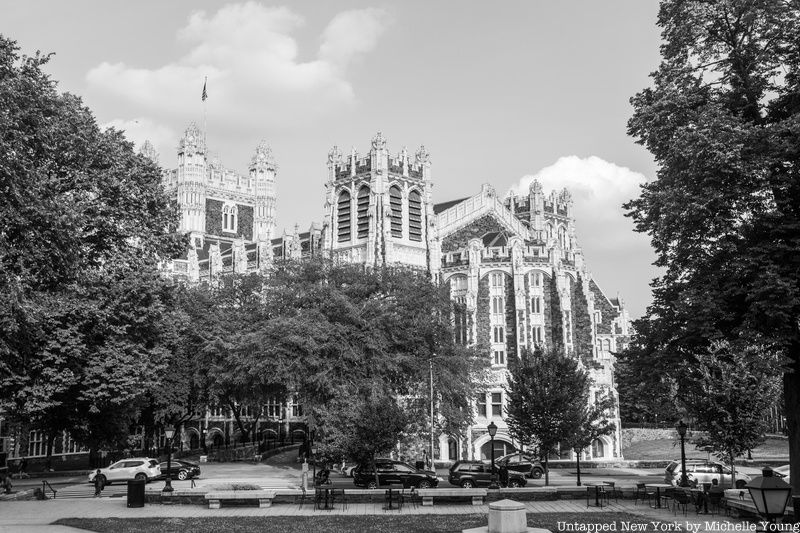
Like Houdini, I have escaped my chains—flown free of my Brooklyn coffin. I finally live in TO CITY. I walk home from a party in the early-morning hours with the authority of a savannah lion, out for a midnight snack on a moonless night. I know that I am invisible to all the prey animals, protected from deviants thanks to survival skills honed to razor sharpness after 15 years of riding the El by myself. It’s March, still cold, but every few blocks, a subway grate offers a steamy cloud rising from the IRT that runs beneath Broadway. I have a new relationship with public transportation —microseconds of spa-warmth that billow up my skirt.
My life in TO CITY is magical, and I often amuse myself during my long walks to my low-paying job by imagining romance novels. In one, I am a brilliant art restorer, and the hero is an emotionally damaged Italian industrialist who has hired me to restore a priceless Raphael painting. I am so motivated by my daily fictions that I enroll in night classes at City College—Latin and Organic Chemistry. I last a month.
After two years of poverty pay, I get a better job. I can now afford share-houses—skiing at Killington and summering in the Hamptons, but in June, I get fired for spending too much time arranging carpools. What if I have to leave my turf—sitting high atop my karst outcropping in my own personal Serengeti? I cannot return to FROM CITY, so I get a freelance gig designing graphics for a patent infringement trial to stave off financial doom. There are no computers for this yet, and so twenty of us cram into an office in the shadows of the World Trade Center. One day, a new designer joins us and is assigned the drafting table behind me. Apparently, the back of my neck is irresistible, and before I know it, we are dating, living together, having a pre-wedding dinner atop one of the Twin Towers, and moving to the suburbs. I swallow my sadness as the movers pack my TO CITY memories into cardboard boxes and load them onto a truck.
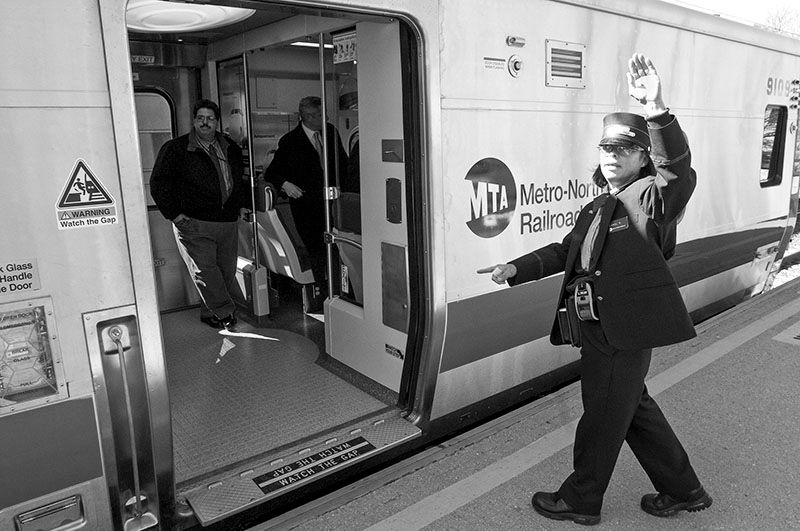
Photo: Metropolitan Transportation Authority / Patrick Cashin
There really is a town called Pleasantville. Once again, I spend an hour and 15 minutes each way on a train to and from midtown. I now have a new nemesis: the pre-electrified Metro-North Harlem Line. If the J train was graffiti-covered with malfunctioning lights and an unreliable heating system, the Harlem Line reeks of diesel fuel and alcoholism. Memories of the El from a possible past life, when soot-spewing engines pulled the cars into the station, flood my veins every morning as the 7:46 train pulls into Pleasantville. My fellow travelers are pale men in shapeless suits. How I miss my Super-fly companions from the A train, or the Hasids on the J with their bobbing curls swaying with the motion of the train as it crosses the Williamsburg Bridge!
One August morning, I board Metro-North, wearing a white silk Oscar de la Renta dress. About 15 minutes outside of Grand Central, as we approach the spot where the train dips underground, a panel in the air conditioning unit above my seat gives way, and I am showered with a torrent of oily water. The thin white silk is soaked, and I find myself metaphorically enrolled in a wet T-shirt contest on a packed commuter train as my seat companion licks his stockbroker lips. This is MY end of my line. The way a life turns.
Perhaps it was my destiny that day: to sit in that seat, wearing that dress. In that one 6-second event, my TO CITY days ended. I found a job in publishing, a 10-minute drive from our house, and my life careened in another direction. They don’t tell you this: As we get older, life roars by—a speeding Shinkansen of colicky babies and cranky clients, and Twin Tower bombings that killed someone I knew, and anthrax in the mail that killed my business and forced me to start all over. Life speeds along on its inexorable express track—a runaway train of sickness and health, joy and sorrow. And yet—I am still devoured by a need to keep running, climbing, riding, moving—going somewhere, anywhere—everywhere.
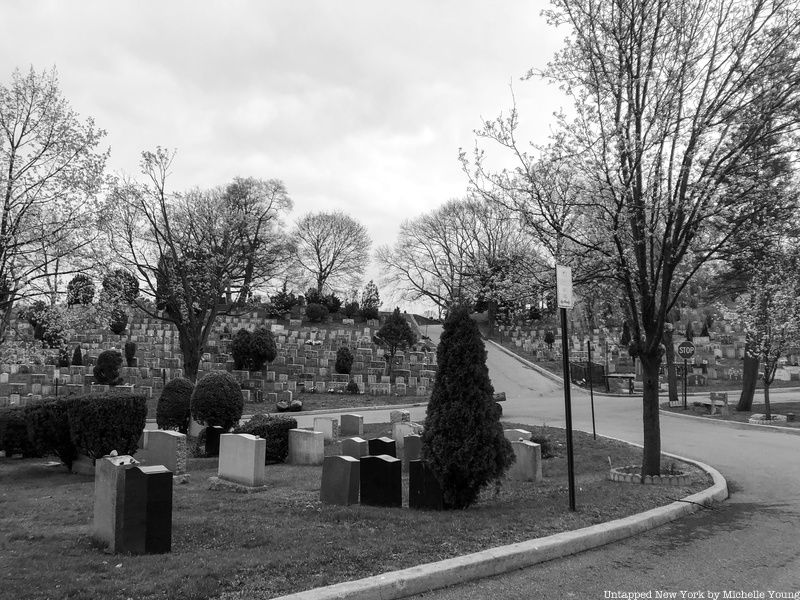
Just two months after burying my father, on a wretched February day, so cold that the thermometer in our car never registers above -3, we bury my middle sister. The ground is raw. My mother wears two fur coats—her own and my oldest sister’s atop it. Beneath a borrowed fur hat, grief-ravaged red eyes peer out against paper-white skin. Perhaps this is my fault.
“It’s okay. You’ll feel better soon,” I had told my middle sister the last time I’d seen her alive. “He was the only man who ever loved me,” she whispered, so softly that I still wonder if I heard this or imagined it. Perhaps I should have saved my platitudes. Maybe it would have been enough just to hold her in my arms and let her warm tears dampen my shoulder. We were all deafened by grief then—a sorrowful keening that overwhelmed us. Perhaps silence might have coaxed her out of her misery? Every once and a while, the guilt I carry about my sister’s death erupts like an uncontrolled hiccup—the knowledge that broken hearts cannot be repaired with words that are as useless as a Band-Aid that will not stick. Perhaps I could have saved her, and in doing so, saved my mother her unbearable pain. I did not become a concert pianist, and I was never able to erase her agonies at her daughter—my sister’s—death. Perhaps I could have tried harder? It is only now that I realize that the part of what made my mother so difficult was the part that made her so remarkable. My sister did not understand this.
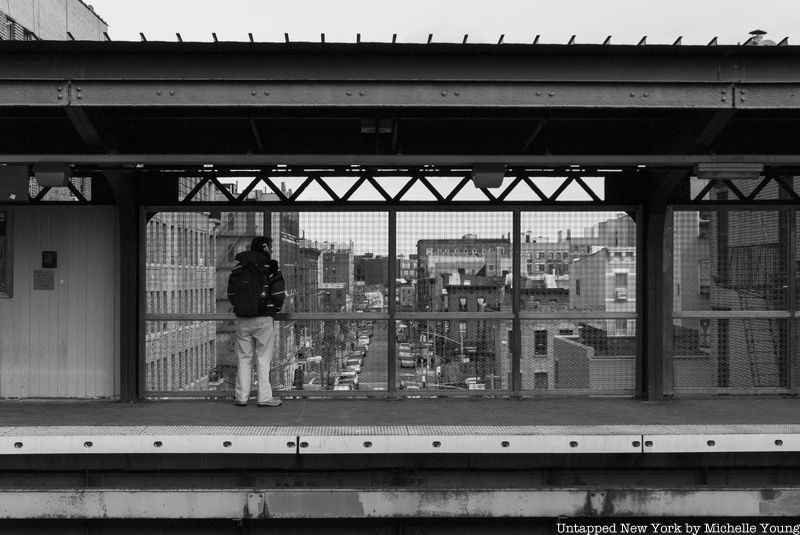
After the freezing funeral in Cypress Hills’ vast cemetery city, my husband, toddler, and I drive to my old house in the shadow of the El and park the car. The windows quickly steam up as our warmth confronts the exterior Siberian cold. My son sleeps in his car seat, and my husband takes my hand and lets me sit quietly, patiently, waiting for the next train, waiting to watch the sparks shower down onto the street below. And I sit there, thinking about where to go next because I know, and still know, that somewhere, anywhere — everywhere—something is waiting at the next stop.
Next, check out 10 famous people buried in New York City.
Subscribe to our newsletter